How to apply microcement on stairs: step by step and tips
Microcement is the decorative coating par excellence for floors and walls. In fact, it is very common to observe continuous pavements andmicrocement walls in all types of commercial premises and businesses. But also in the domestic field, where this coating has gained stellar popularity in the renovation of bathrooms and kitchens thanks to the waterproof and non-slip finishes offered by microcement.
A versatility to which must be added the microcement stairs, a differentiating decorative element that more and more professionals and individuals take into account for its modern aesthetics, the continuity it provides by not needing expansion joints and, above all, its extraordinary functionality compared to other materials.
Since we must not forget that although microcement stairs are designed to facilitate and speed up access to the different floors of the building in question, it remains a powerful design element at a visual level due to its disruptive nature.
In this article we are going to address everything you need to know about microcement stairs: advantages, types, most suitable colors, how to correctly make a microcement staircase and a series of tips for you to become a true expert in the field.
Advantages of microcement stairs
Stairs are one of the most frequented places in homes. They are used several times a day, with the consequent wear and tear that this entails. With microcement, not only is a touch of modernity added to the staircase, but also durability and great resistance to wear by abrasion and traffic.
Regardless of the shape of the staircase, whether it is old or newly built, stairs coated with microcement are imposing and attract anyone's gaze. But there are many more reasons why they have become a current decorative trend.
Next, we explain the main advantages that have boosted microcement stairs to the top.
Why have microcement stairs become a decorative trend? Below we explain the main benefits that have boosted microcement stairs to the top.

1. Microcement stairs promote continuity
Stairs coated with microcement are gaining more and more followers every day for many reasons, especially because they do not need expansion joints unlike wooden or parquet stairs, for example. An added value since microcement stairs promote the continuity of the stairs themselves and, above all, of the room in which they are located.
All elements (stairs, floor, walls, ceiling) are part of a whole by being perfectly integrated. An appearance of absolute continuity that can go a step further if the color of the stairs matches that of the pavement.
2.Forget about the works with microcement stairs
Microcement is a decorative coating with great adhesion that is applied directly over the existing material such as marble or concrete. A competitive advantage that allows you to renovate the stairs with microcement without the need for construction and debris in just a few hours, with the time and cost savings this entails.
3. Easy cleaning of microcement stairs
Small stairs usually don't cause many problems in terms of cleaning. But, what about those endless stairs that connect floors and floors and make you dizzy just by looking at them?
Microcement stairs are very practical, as their cleaning is very simple being a continuous surface without joints that facilitates and speeds up the cleaning process of each step. With water and neutral soap, it is more than enough.
4. Microcement stairs are very resistant
If there is a distinguishing element of microcement stairs, it is their durability. They will remain in perfect condition even as the years go by thanks to the excellent resistances they enjoy, especially to traffic, impact and abrasion. The Topciment microcement for stairs is a material that withstands all kinds of blows.
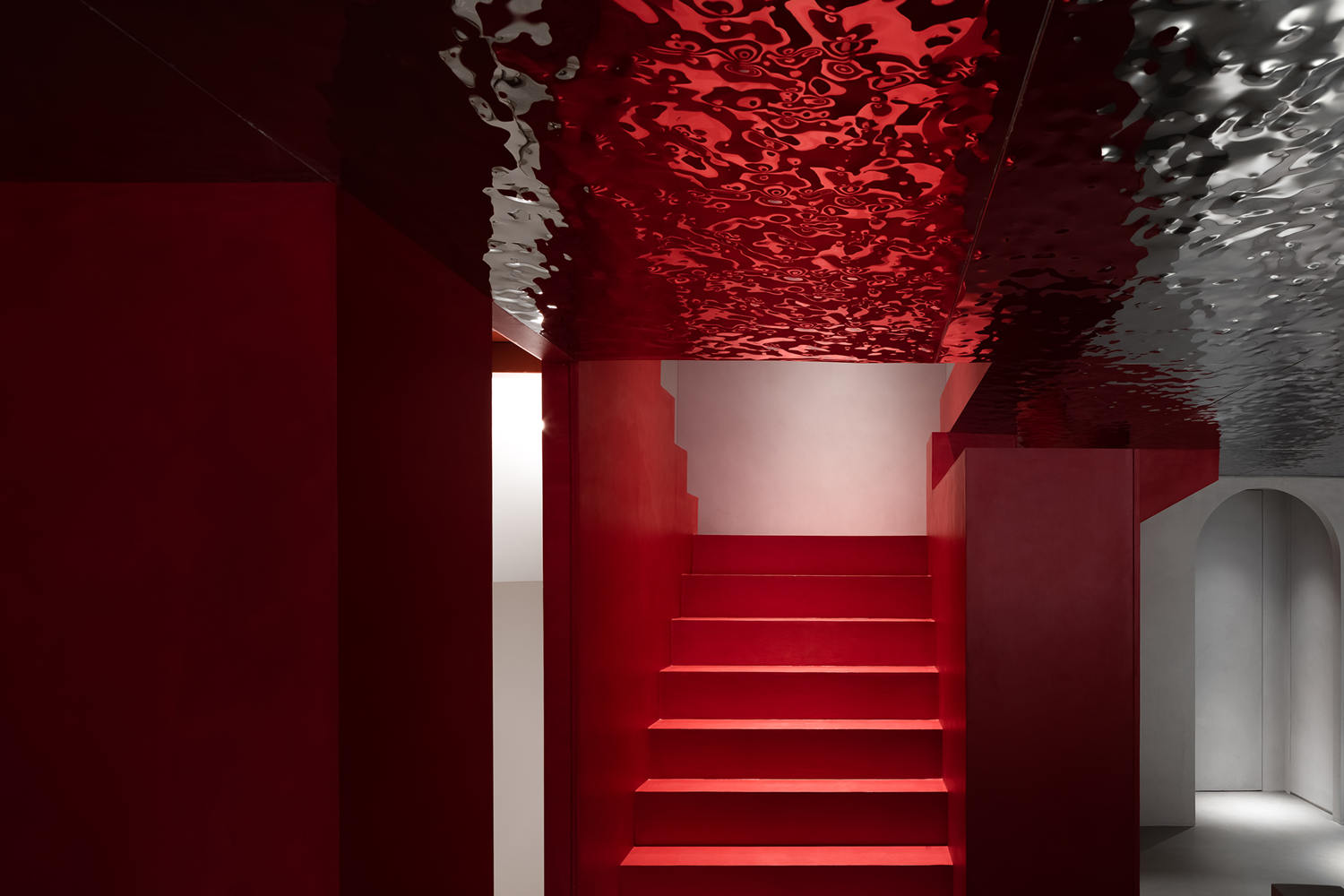
5. Microcement on stairs does not affect the structural load
It should be noted the minimal thickness of the microcement (between 2 and 3 millimeters). This allows that covering the stairs with microcement does not affect in any way the structural load.
6. Microcement stairs for indoors and outdoors
Microcement stairs are a very versatile architectural element that is used mainly in interior design for the feeling of stability, spaciousness and cleanliness it offers. However, it has become increasingly fashionable to cover stairs with microcement also in exteriors, for the elegance, majesty and presence they exude.
7. Microcement stairs with non-slip finish
Thanks to our Microdeck microcements, the microcement staircase will be a safe space free from slips and falls, as they are types of smoothed microcement that guarantee this anti-slip finish. Likewise, in case the applicator opts for another type of microcement, at Topciment we have our Topsealer WT Anti Slip varnish that gives the microcement staircase this anti-slip character.
Types of microcement stairs
The design possibilities that microcement allows for coating stairs are unlimited. In the categorization that we are going to make, we have taken into account two factors. Firstly, whether the steps of the microcement stairs are between the walls or not and the type of risers of the same.
With this differentiation, we find the following microcement stairs: microcement stairs closed with two walls, microcement stairs closed with one wall, microcement stairs closed without walls, microcement stairs open with two walls, microcement stairs open with one wall, microcement stairs open without walls, microcement stairs embedded in a wall, microcement stairs embedded without walls, and microcement stairs with central support.
What microcement and color to use for the stairs
Although gray is the most demanded color for coating stairs with microcement, all kinds of colors can be applied to provide a distinguishing element to the decoration of your home or business. At Topciment, we have a wide catalog of microcement colors for stairs. From neutral colors for a more minimalist and industrial design to more vibrant colors if a more daring decoration is sought.
Regarding the type of microcement, our experts recommend the Microdeck finishing microcement for coating the stairs. At Topciment we have developed three types of Microdeck: Sttandard Microdeck (traditional two-component microcement), and Evoluttion Microdeck (one-component microcement).
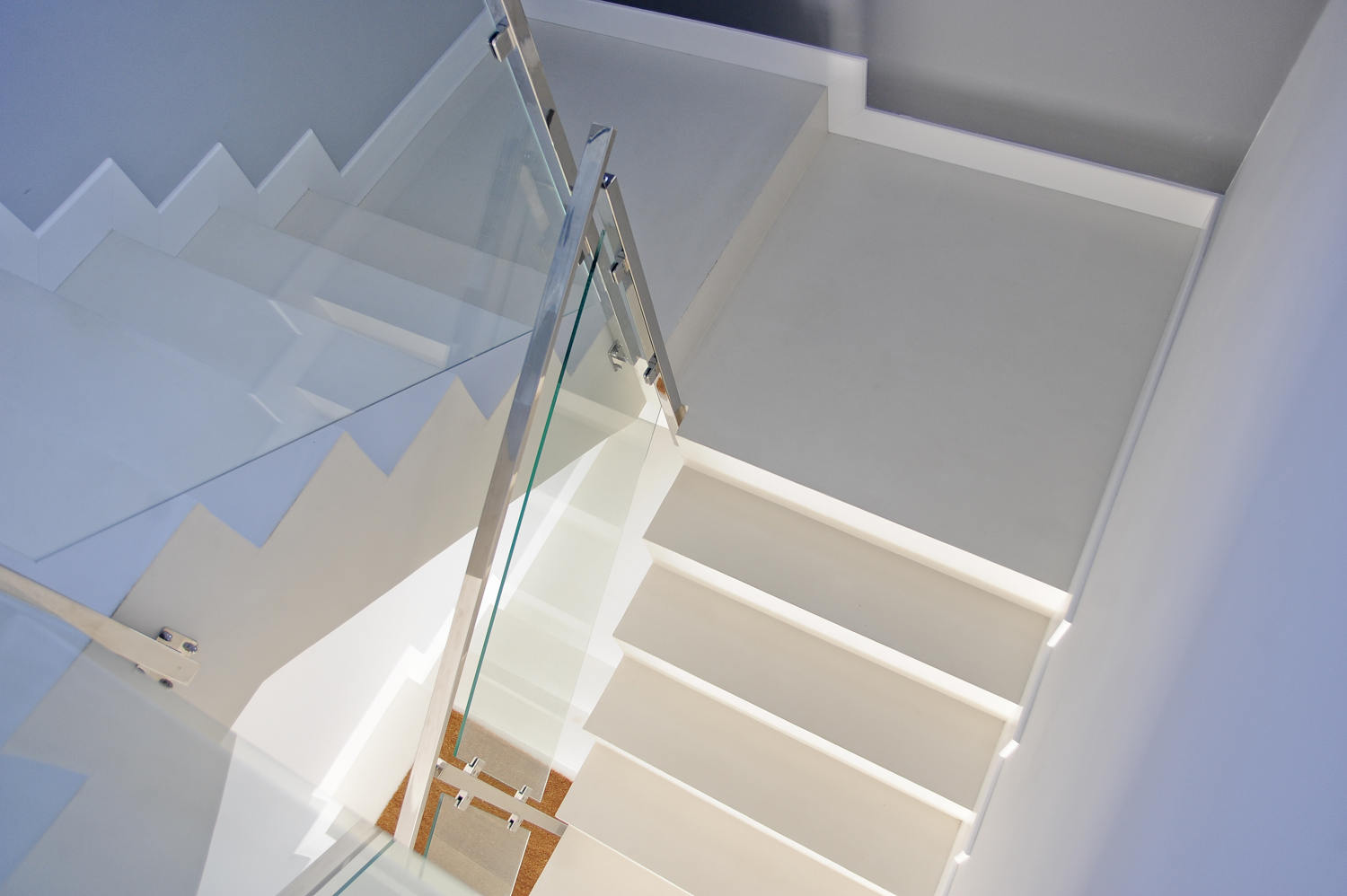
What materials can microcement be applied to on stairs?
One of the qualities of microcement is that it can be applied on a multitude of the most varied supports. This versatility is what makes the difference compared to other decorative coatings on the market. In this way, microcement can be applied on a staircase of tiles, marble, granite, and cement, among other materials.
You will quickly, easily, and without construction work renew your staircase by covering it with a couple of millimeters of microcement. A layer that being so thin will not affect the structural load of the staircase at all. The surface will be completely stable and continuous in a single operation, thus modernizing an element that will fit again with the interior design of the rest of the room.
Microcement and wood stairs
However, there is a material on which we advise against applying microcement: wood. Why? Very simple. Wood is a material that can contract and expand and, consequently, produce microcracks that would affect the new support.
Another major problem with applying microcement to a wooden staircase is that, if the wood in question is not fully cured, it can release resins. This would cause the new microcement coating to copy the grain of the wood.
On the other hand, if you have MDF wooden stairs, microcement can be applied to the steps.
Exterior microcement staircase? A resounding yes!
The microcements that we have developed at Topciment can be applied both on interior stairs and on exterior stairs. With the use of our Topsealer varnishes, the staircase will resist the effects of the sun's rays as well as rainwater.
Another advantage of our microcements for outdoor stairs is that they provide a non-slip finish, making them very safe against possible falls and slips.
On the one hand, we have Microdeck, which can be applied with the fresh on fresh technique and is one of the most used microcements for coating stairs in outdoor spaces. It is available as two-component microcement and one-component microcement. In both cases, it has good slip resistance and very good mechanical and chemical resistances.
On the other hand, there is Sttandard Microstone, our two-component microcement specially created to coat exterior surfaces. Unlike Microdeck, it has a higher level of slip resistance. In terms of aesthetics, it is the most suitable for achieving a more rustic and rough finish.
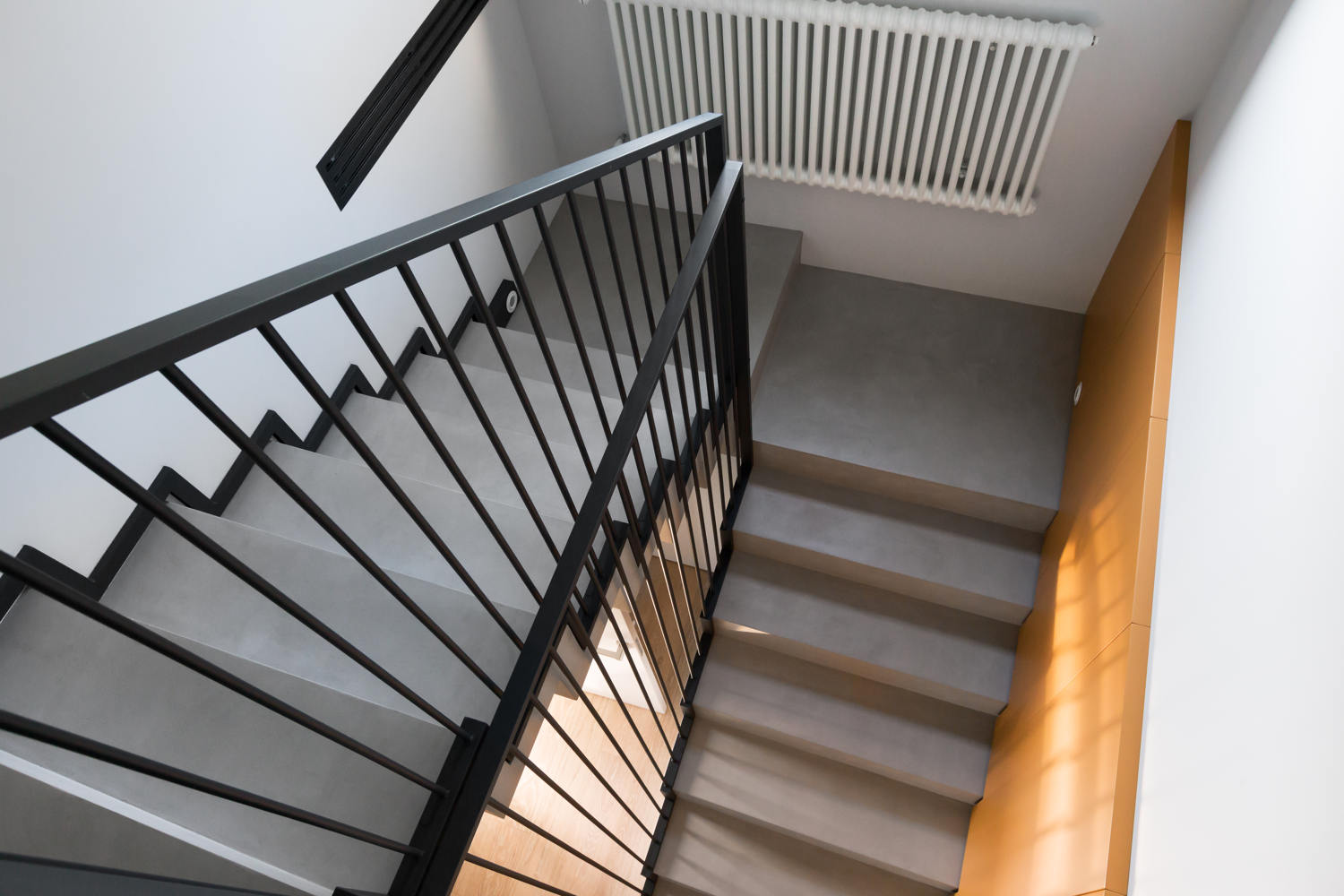
How to apply microcement on stairs: 8 steps
The first thing to keep in mind when applying microcement to a staircase is that this process can only be carried out by an experienced professional. Since covering a staircase with microcement requires an advanced application technique to achieve the desired result. A series of peculiarities that must be taken into account and that only a trained applicator will be able to guarantee.
Take note of the 8 steps to follow on stairs coated with microcement.
1. Evaluate support status
It is necessary to analyze the state of the existing support on the stairs before applying microcement. Since if the support that is going to be the base for the microcement staircase is not in optimal condition, all kinds of cracks or defects could end up appearing. That's why it's so important to have a good professional, who will know how to correctly evaluate the quality of the support.
2. Priming of the microcement staircase
Once we ensure that the support is in good condition, the second step to make a microcement staircase is to apply the primer or adhesion promoter.
3. Level the steps of the microcement staircase
The third step to make a microcement staircase consists of leveling and protecting the steps. In this way future breaks and wear are prevented by eliminating any irregularity that may exist.
4. Apply first layer of Microbase microcement on the staircase
The fourth step first layer of Microbase without pigment. Once done, it would be sanded.
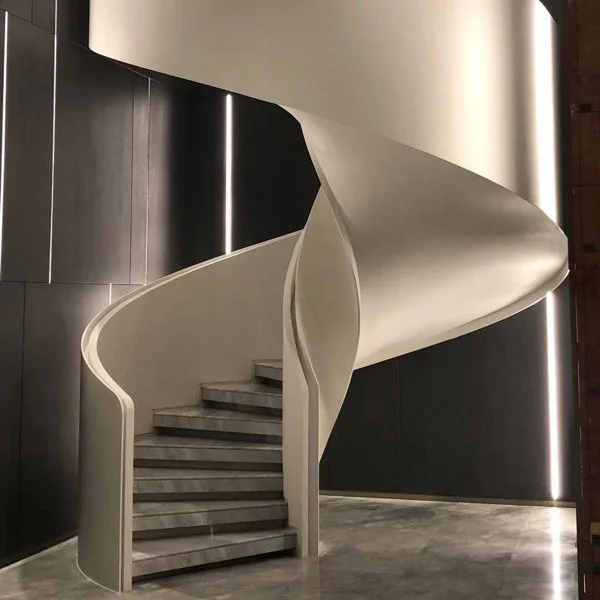
5. Apply second layer of Microbase microcement on the stairs
The fifth step in applying microcement on stairs is to apply a second layer of Microbase, in this case with pigment. The procedure and sanding from the previous step must be repeated.
6. Apply first layer of Microdeck microcement on the stairs
The sixth step to apply microcement on stairs is a first thin layer of Microdeck with color. Once the layer dries, the surface will need to be sanded.
7. Apply second layer of Microdeck microcement on the stairs
The sixth step to make microcement stairs is to apply the second layer of Microdeck. As soon as it dries, it will be necessary to sand the surface.
8. Seal and protect the microcement staircase
El último paso de la aplicación del microcemento en escaleras es uno de los más importantes, ya que se trata de proteger el revestimiento y que su estado óptimo se prolongue en el tiempo. Para ello, en Topciment aconsejamos aplicar dos manos del barniz acrílico Presealer y otras dos manos de uno de nuestros barnices de poliuretano, especialmente Topsealer WT One Coat .
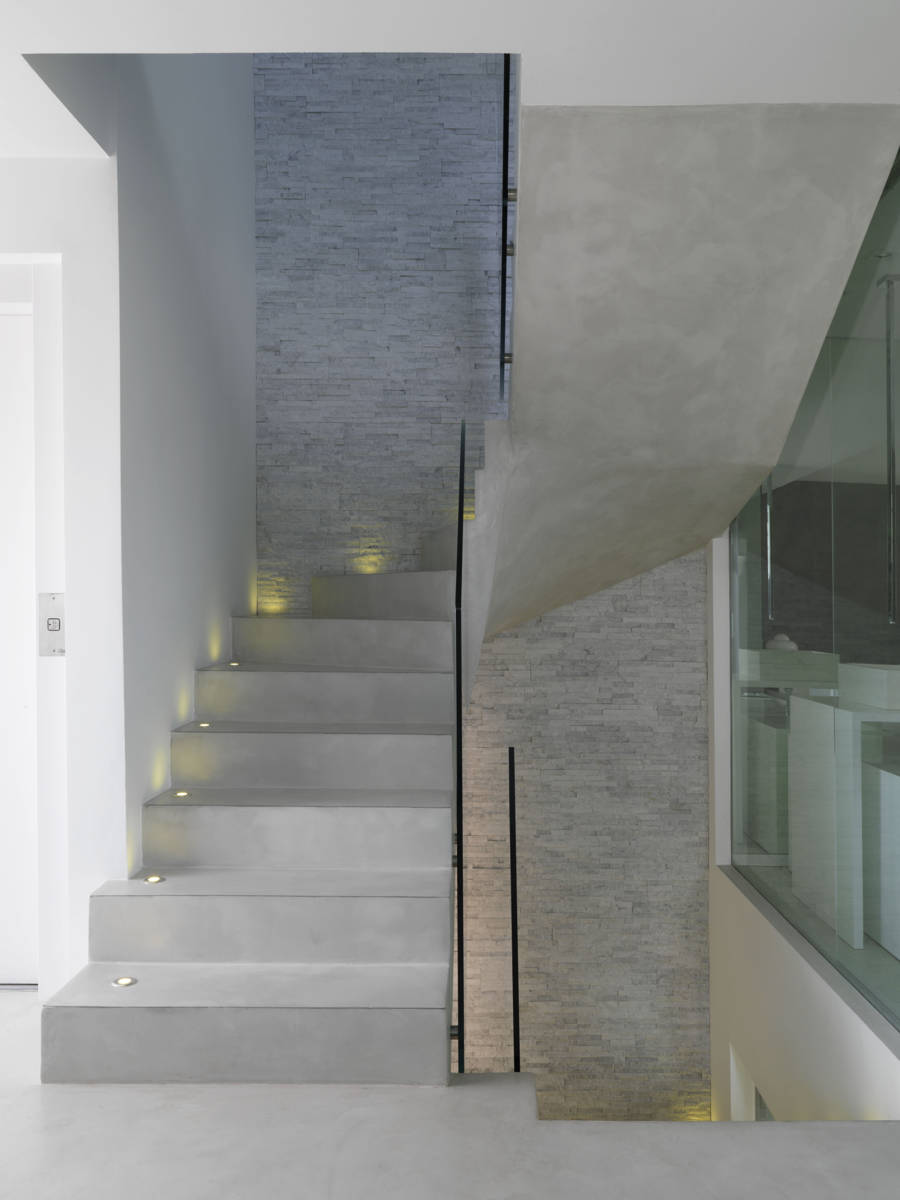
the floor also coated with Topciment microcement.
3 tips for applying microcement on stairs
As previously mentioned, not everyone is capable of making microcement stairs, only professional applicators with years of experience due to the complexity involved.
These are the three main tips to keep in mind when making microcement stairs:
1. Protect with aluminum profile the edges of the microcement staircase
The corners or edges of the microcement staircase steps are, without a doubt, the area most exposed to all types of scratches and bumps. Therefore, as manufacturers we advise applying corner guards or aluminum profiles. Accessories that can be hidden from view (although we recommend leaving them visible because they add a touch of elegance) and that will better and longer protect the microcement stairs, thus preventing breakages or wear and tear.
2. Edges of the microcement staircase minimally rounded
Although the step of the microcement staircase can be left at 90 degrees, it is advisable that the edges are rounded at least minimally. Following this advice and "cutting" the edges of the future microcement staircase, chipping or blows are avoided since the impact on the microcement staircase is less.
3. Fiberglass mesh yes or yes in a microcement staircase
Although some applicators do not always place a fiberglass mesh in the base layer of the microcement, at Topciment we are in favor of always doing it. Thanks to the mesh, we manage to reinforce the microcement staircase
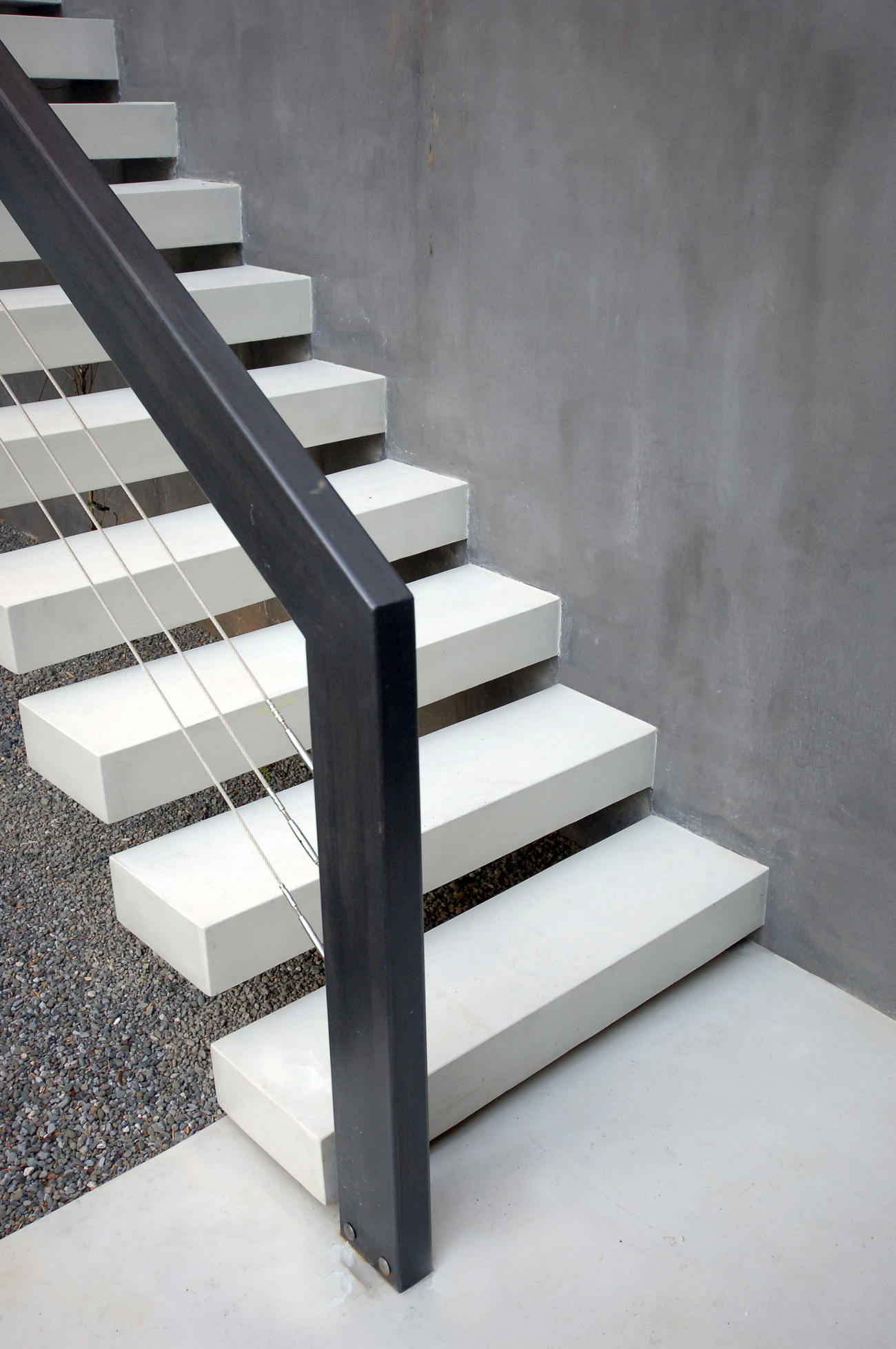
How to keep the microcement staircase in optimal condition
As previously explained, the microcement staircase is very resistant, so it does not require exhaustive care to stay in good condition.
We recommend cleaning it once a week with a neutral detergent or using our professional cleaners from the Ecoclean range. The use of corrosive products would damage the new coating.
In addition, it is also highly advisable to apply a wax every four or six months. With this product, the protective layer of the microcement on the stairs is renewed and also its shine. We have designed the Ceraciment family.
Price of the microcement staircase
The price the cost of a microcement staircase does not vary compared to the cost of coating a pavement or a wall. The dimension of the surface, measured in square meters, is what matters. In addition, there are elements such as the complexity of the work or the quality of the materials that intervene in the final cost.
Although it is true that there are some applicators who take into account the treads and risers that the staircase has to set a final price. Which can increase the cost a bit.
Approximately, the price of a microcement staircase is between 60 and 100 euros per square meter.
Subscribe to our newsletter
Receive in your email tips for the application and care of microcement, the latest trends and news from Topciment products.




